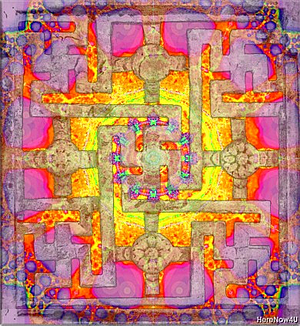The ultimate purpose of all life and activity in Jainism is to realize the free and blissful state of our true being. True philosophy should result in removing all bondages (karmas) in the process of purifying the soul.
The central theme of Jainism considers religion as a science of ethical practice. The conduct of the present life should be aimed to attain total freedom from which there is no return to the birth and death cycle. Every soul can attain liberation and supreme spiritual state by realizing its intrinsic purity and perfection.
Jainism lays down a definitive course of practical moral discipline, contemplation of the highest truth, and reorientation of life in light of these for attaining ultimate reality or truth.
The principle features of Jainism ar
religious tolerance |
ethical purity |
harmony between self and one's environment |
spiritual contentment |
Jainism prescribes a path to liberation (Moksha), consists of the following trinity (ratna-traya):
1 | right perception | samyak darsana |
2 | right knowledge | samyak jnana |
3 | right conduct | samyak charitrya |
Right perception creates an awareness of reality or truth,
right knowledge impels the person to proper action,
and proper conduct leads him to the attainment of the total freedom.
They must coexist in a person if one is to make any progress on the path of liberation.
1. Right Perception (Samyak Darsana):The first step in the process of self-realization is to discard superstitious beliefs and to adopt a rational attitude in life.
 Pravin K. Shah
Pravin K. Shah

